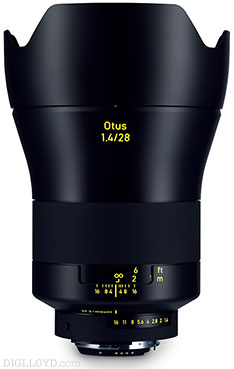EXCERPT page containing first few paragraphs. 2024-04-24 03:11:20
UA_SEARCH_BOT_compatible_botmozilla/5.0 applewebkit/537.36 (khtml, like gecko; compatible; claudebot/1.0; +claudebot@anthropic.com) @ 18.191.46.36
For full access, subscribe here. Or click title to login. ![]()

Otus lenses are ideal for focus stacking
Why Lens Performance Matters for Focus Stacking
A high quality stacked image starts with the best possible image quality for each of the frames. This matters even more than with a single image because the stacking process must combine images; any lens shortcomings confuse that process, particularly since some aberrations can change shape as the focus changes, and real depth of field and peak MTF contribute to improve or degrade the “signal to noise” ratio, so to speak.
When stacking, less than ideal lens performance makes it difficult to determine where the best blend is, both for the stacking software itself and for hand touchup following stacking. For example, Warm and Cool Aspen needed a lot of touchup, due to overlapping branches and leaves at different distances that are small and moving between frames (creating blur and double images when stacked). With less than world-class performance, that process is unnecessarily tedious; in that example the lens delivered very good but not great performance, which made the touchup process tedious at “blend points”—areas where overlapping frames are close, with one frame holding only a modest advantage.
Article continues for subscribers...
Diglloyd Making Sharp Images is by yearly subscription. Subscribe now for about 13 cents a day ($50/year).
BEST DEAL: get full access to ALL 8 PUBLICATIONS for only about 75 cents a day!
Diglloyd Making Sharp Images articulates years of best practices and how-to, painstakingly learned over a decade of camera and lens evaluation.
Save yourself those years of trial and error by jump-starting your photographic technical execution when making the image. The best lens or camera is handicapped if the photographer fails to master perfect shot discipline. High-resolution digital cameras are unforgiving of errors, at least if one wants the best possible results.
- Eases into photographic challenges with an introductory section.
- Covers aspects of digital sensor technology that relate to getting the best image quality.
- Technique section discusses every aspect of making a sharp image handheld or on a tripod.
- Depth of field and how to bypass depth of field limitations via focus stacking.
- Optical aberrations: what they are, what they look like, and what to do about them.
- MTF, field curvature, focus shift: insight into the limitations of lab tests and why imaging performance is far more complex than it appears.
- Optical aberrations: what they are, what they look like, and what to do about them.
- How to test a lens for a “bad sample”.
Intrigued? See Focusing Zeiss DSLR Lenses For Peak Performance, PART ONE: The Challenges, or (one topic of many) field curvature.

NIKON D810 + Sigma 24-35mm f/2 DG HSM Art @ 24mm
[low-res image for bot]

